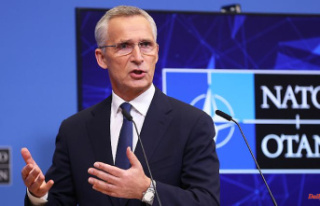The Oktoberfest is over, the number of cases in Bavaria is rising steeply, beds are running out in the hospitals. Health Minister Lauterbach speaks of a "self-made disaster". However, the infection process is not only flaring up in Munich.
In southern Germany, the pandemic situation threatens to get out of hand: In Bavaria, the number of detected coronavirus infections skyrocketed in the second week of October. Observers also suspect a connection with folk festivals such as the Munich Oktoberfest.
In the hospitals of the Bavarian state capital, the rapid increase in the number of cases is already causing massive stress. Not only have more and more severe Covid cases been arriving there for days. Staff failures also cause sometimes serious bottlenecks in supply. Clinics from other Bavarian regions are also reporting growing problems.
Note: Data and infographics are continuously updated.
Was the Oktoberfest the trigger? Or was the controversial event just a "fire accelerator" of the autumn wave, as experts in Munich suspect. One way or another, the consequences in the health system are already being felt: after the Wiesn, the "fears of a wave of emergency patients and dramatic staff shortages are true," quoted the "Süddeutsche Zeitung" from a fire letter from the works council of the city hospitals. "The situation is serious and it will get worse," says the letter to Munich Mayor Dieter Reiter.
Routes of infection and places of infection can only be precisely documented in rare cases. In the case of Munich, however, connections to the world's largest folk festival are at least obvious. Critics had already warned in advance of the obvious risk of infection in the haze of the beer tents. Bavaria's Prime Minister Markus Söder, on the other hand, defended the Wiesn, which is also of considerable economic importance for the city of Munich, as a festival of "joy and freedom". Demonstratively, he had himself photographed without a mask at the opening.
The Munich Oktoberfest lasted from September 17th to October 3rd. The city had a total of around 5.7 million Oktoberfest visitors this year, significantly fewer than in the pre-Corona times. For 16 days, locals and tourists from all over the world partied with beer and songs into the night, many of them in the dense crowds of the 17 large marquees. There were no binding test requirements, distance requirements or a mask requirement.
Nine days after the start of the mass event, the corona numbers in Munich and the surrounding area began to rise noticeably. At that time, the health officer for the city of Munich, Beatrix Zurek, explained when asked by concerned media representatives that not only the number of infections was important, but also how things looked in the hospitals. The numbers in the normal and intensive care areas would have increased, "but not in such a way that you have to worry".
A good three weeks after the start of the Wiesn, the health system in the Bavarian capital looks very different. The "health of the city of Munich" is "endangered" by the burden on the clinics, tweeted Federal Health Minister Karl Lauterbach. He described the development as a "self-made catastrophe".
There were "no official restrictions" for the Oktoberfest 2022, as stated in the "Information for Oktoberfest visitors". No proof of vaccination or testing was required. Corona, it seemed, played no role in the hustle and bustle. The 187th Oktoberfest attracted a "relaxed, good-humored and young folk festival audience," summed up the festival management. Despite the almost constant cold and wet weather, there was a "good mood" on the festival grounds. "The guests mainly headed for the indoor establishments."
The Munich clinics are "fully occupied and increasingly overcrowded," says the fire letter to Mayor Reiter. Due to a lack of free capacity, some patients requiring treatment could no longer be admitted. This also has consequences for the care of accident victims or stroke patients, for example, who have to be transferred to the nearest free hospital if necessary.
The occupancy of corona patients in Munich hospitals is at the level of mid-December 2021, clinic director Christian Unzicker confirmed to the SZ. At that time, all of Germany was affected by the hardest Corona winter wave to date. However, differences to the situation at that time are “illness-related absences among employees with corona infection and isolation, a significant number of absences with other colds and the lack of measures in the context of a disaster case, which the responsible authorities have not activated this time”.
The critical situation in the hospitals is no longer limited to the greater Munich area: for the city itself, the Robert Koch Institute (RKI) recently recorded a seven-day incidence of almost 1500, with a strong upward trend. The district of Munich is still just under 950. In Fürstenfeldbruck, west of Munich, it is already 1840.
The fact that the figures from the authorities were distorted by weekend and public holiday effects was of little help. And: How high the number of undetected infections must be set remains unclear. Only laboratory-confirmed cases are counted in the official RKI statistics. A complex and sometimes chargeable PCR test is usually required for detection.
It is therefore difficult to estimate the true extent of the ongoing wave of infection. The incidence values only provide a first rough indication for assessing the situation. For comparison: nationwide, this figure is 787.5 new infections within seven days per 100,000 inhabitants. Only in Saarland do the health authorities report higher case numbers than in Bavaria.
The critical situation in the hospitals is by no means limited to the greater Munich area. The Free State of Bavaria is also well over 1000 in the RKI data on the number of cases. The upcoming autumn wave is causing difficulties in the health system in more and more regions.












